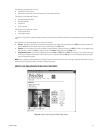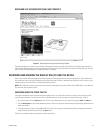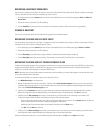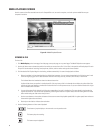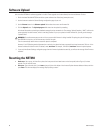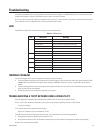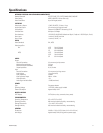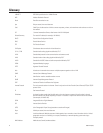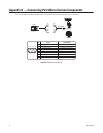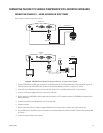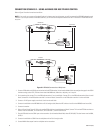
C2907M-D (4/05) 69
Troubleshooting
If the following instructions fail to solve your problem, contact Pelco Technical Support at 1-800-289-9100 for help. You should have the serial
number from the bottom of the unit and the firmware version ready in case they are needed.
Do not try to repair a unit yourself. Opening it immediately voids any warranty. Leave maintenance and repairs to qualified technical personnel.
Swap a defective unit with a replacement unit and return the defective one for repair.
LEDS
The NET350 has several LEDs that indicate the operating status and possible faults.
TERMINAL PROGRAM
If the terminal program fails to connect to the unit’s terminal port, check the following:
• Is the right COM port interface on the PC selected for the terminal program, and are the settings correct? Isthe cable connected to COM 1
and not COM 2 on the PelcoNet unit? Program default settings are 19200kb/s, 8 data bits, no parity, 1 stop bit (8N1) for the terminal
program.
• If the data exchange between the terminal program and the system still does not work, check the serial cable. Does the system answer
when you press Enter on your keyboard?
• Disable the local echo if you see duplicate characters on your screen.
TROUBLESHOOTING A TCP/IP NETWORK USING A PING UTILITY
(Enter the appropriate information where indicated by the quotation marks. Do not enter the quotation marks.)
To see if a unit in your network can be reached, try to ping your unit by typing the following command in a DOS window:
c:\ping ’unit IP address’
If it is reached, there will be a response like the following:
Reply from <IP address>: bytes=32 time=NN ms TTL=xxx
If the LAN is malfunctioning, the ping command will time out. If so, you could have one of the following problems:
• Wrong physical connections. Make sure the LAN link LED is on.
• Wrong network connection. Verify the IP address is entered correctly and that subnet mask and gateway address are set properly.
Otherwise, ask your network administrator.
Table D. LED Definitions
LED Indication Meaning
Power Not lit Device is switched off.
Lit green Device is switched on.
Flashing green Device is transmitting/receiving video/audio
Lit red (temporary) Device is starting.
Lit red (permanent) Device is out of order.
Flashing green/red Upload failed.
I Lit red Alarm input is activated.
Not lit Alarm input is inactive.
O Lit green Relay is switched.
Not lit Relay is inactive (resting state)
L Lit green Physical connection to the network is established.
Not lit There is no network connection.
T Flashing yellow Data is being transmitted via the network.
Not lit There is no data transmission.



